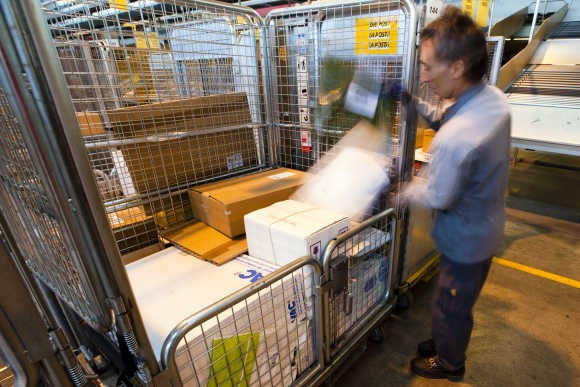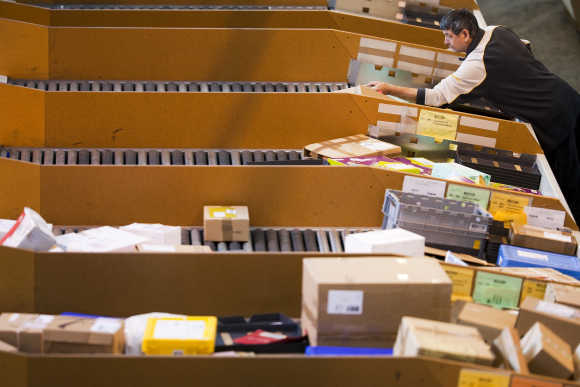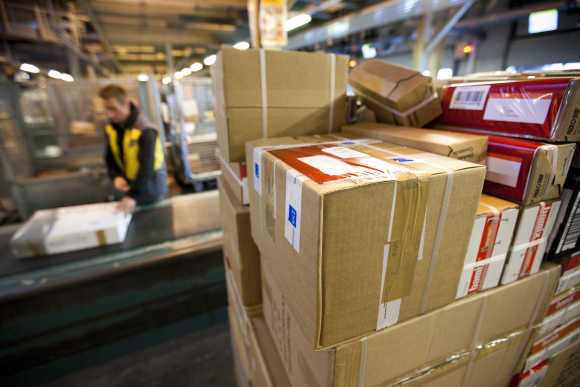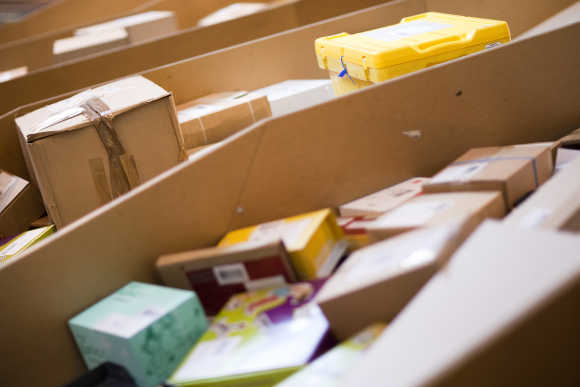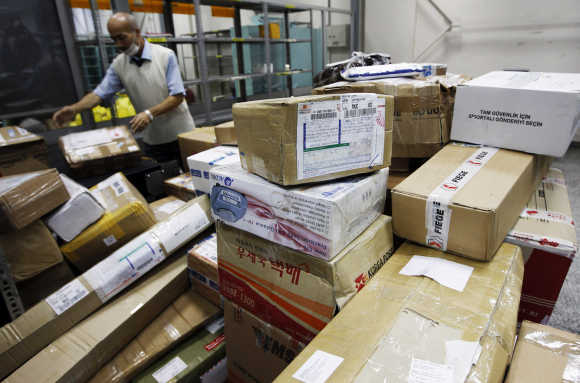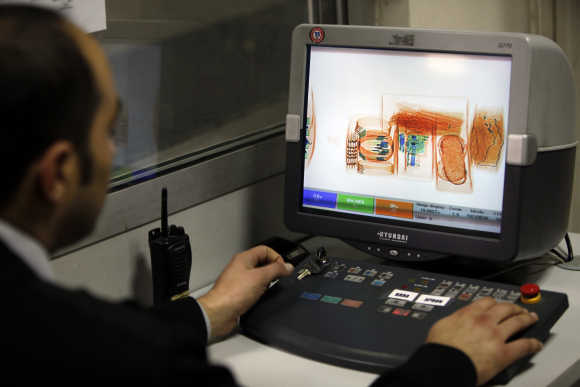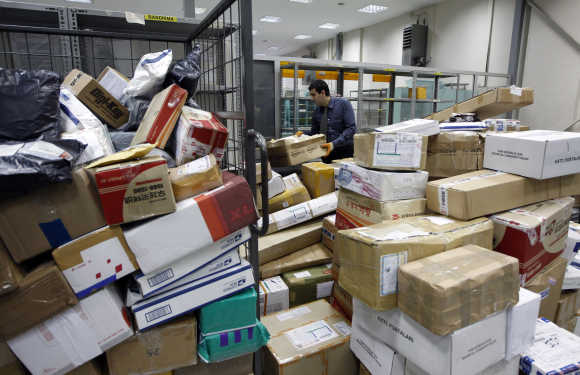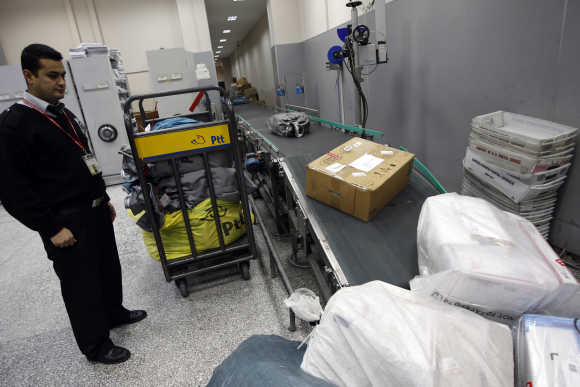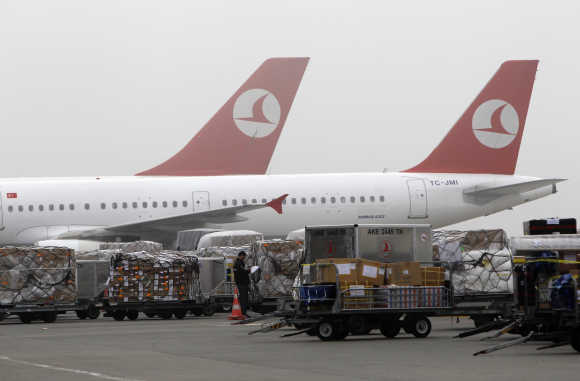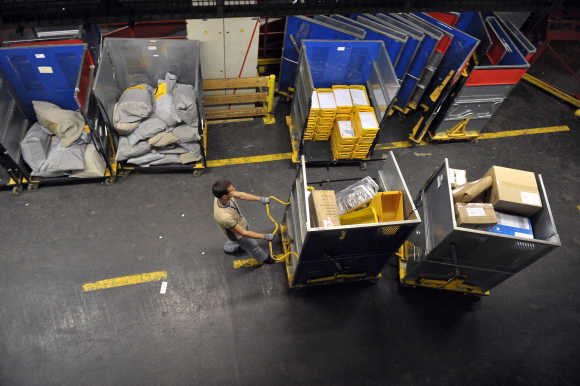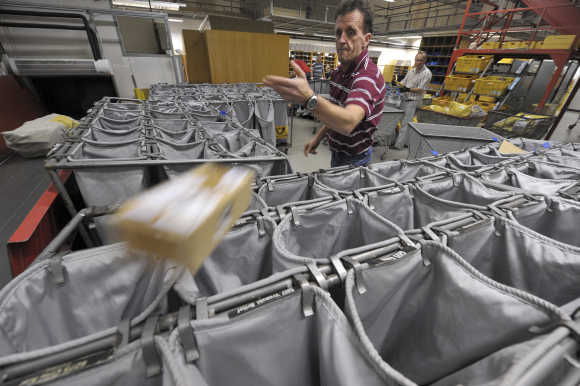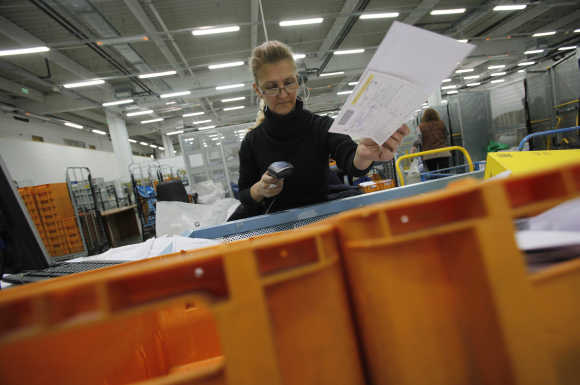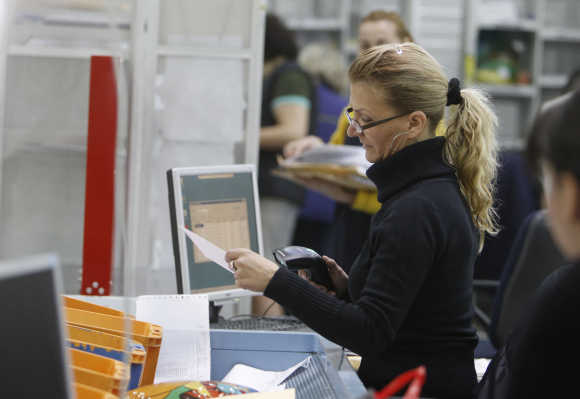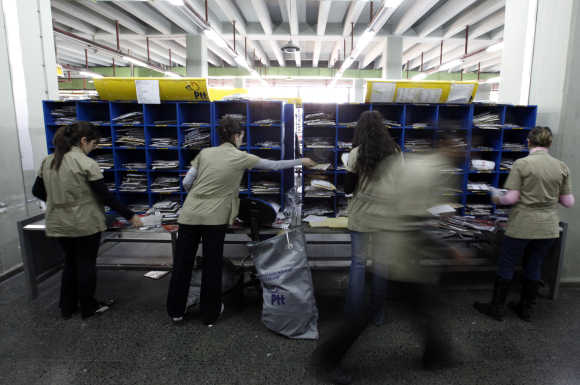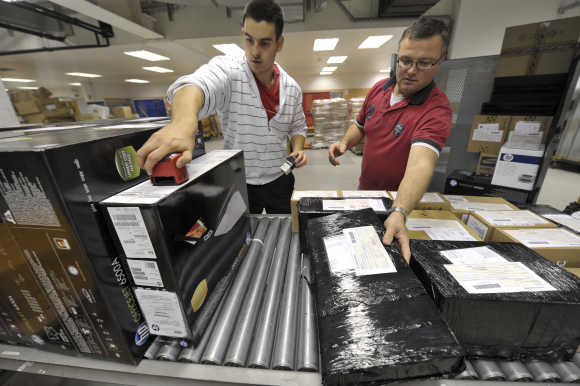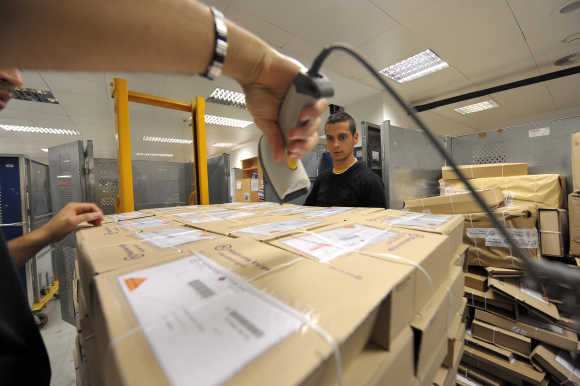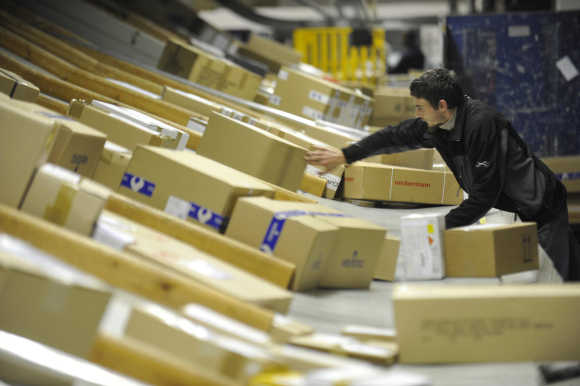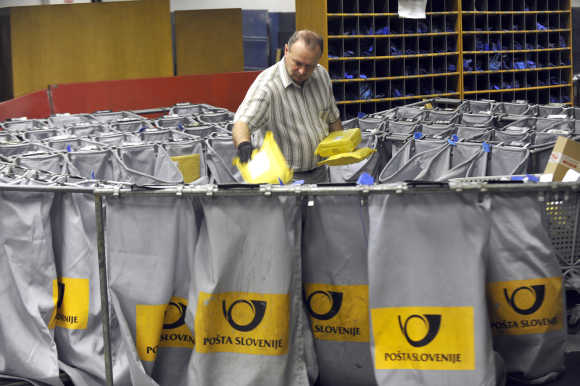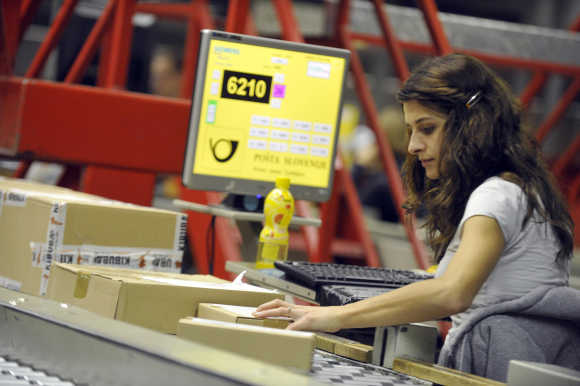 | « Back to article | Print this article |
A look at the postal system around the world
Modern mail is organised by national and privatised services, which are reciprocally interconnected by international regulations, organisations and international agreements.
Paper letters and parcels can be sent to almost any country in the world relatively easily and cheaply.
Click NEXT to read more...
A look at the postal system around the world
The Internet has made the process of sending letter-like messages nearly instantaneous, and in many cases and situations correspondents use electronic mail where previously they would have used letters.
Click NEXT to read more...
A look at the postal system around the world
Though the volume of paper mail continues to increase, the number of first class mail pieces sent in the United States peaked in 2001.
Click NEXT to read more...
A look at the postal system around the world
Some countries have organised their mail services as public limited liability corporations without a legal monopoly.
Click NEXT to read more...
A look at the postal system around the world
The worldwide postal system comprising the individual national postal systems of the world's self-governing states is co-ordinated by the Universal Postal Union, which among other things sets international postage rates, defines standards for postage stamps and operates the system of International Reply Coupons.
Click NEXT to read more...
A look at the postal system around the world
In most countries a system of codes has been created (they are called ZIP Codes in the United States, postcodes in the United Kingdom and Australia, and postal codes in most other countries), in order to facilitate the automation of operations.
Click NEXT to read more...
A look at the postal system around the world
This also includes placing additional marks on the address portion of the letter or mailed object, called "bar coding".
Click NEXT to read more...
A look at the postal system around the world
Bar coding of mail for delivery is usually expressed either by a series of vertical bars, usually called Postnet coding, or a block of dots as a two-dimensional barcode.
Click NEXT to read more...
A look at the postal system around the world
The "block of dots" method allows for the encoding of proof of payment of postage, exact routing for delivery, and other features.
Click NEXT to read more...
A look at the postal system around the world
The ordinary mail service was improved in the 20th century with the use of planes for a quicker delivery.
Click NEXT to read more...
A look at the postal system around the world
The world's first scheduled airmail post service took place in the United Kingdom between the London suburbs of Hendon, North London, and Windsor, Berkshire, on September 9, 1911.
Click NEXT to read more...
A look at the postal system around the world
Some methods of airmail proved ineffective, however, including the United States Postal Service's experiment with rocket mail.
Click NEXT to read more...
A look at the postal system around the world
Receipts services were made available in order to grant the sender a confirmation of effective delivery.
Click NEXT to read more...
A look at the postal system around the world
Mail going to naval vessels is known as the Fleet Post Office and to Army or Air Force installations use the city abbreviation (Army Post Office or Air Force Post Office).
Click NEXT to read more...
A look at the postal system around the world
Worldwide the most common method of prepaying postage is by buying an adhesive postage stamp to be applied to the envelope before mailing; a much less common method is to use a postage-prepaid envelope.
Click NEXT to read more...
A look at the postal system around the world
Franking is a method of creating postage-prepaid envelopes under licence using a special machine.
Click NEXT to read more...
A look at the postal system around the world
In 1998, the US Postal Service authorised the first tests of a secure system of sending digital franks via the Internet to be printed out on a PC printer, obviating the necessity to license a dedicated franking machine and allowing companies with smaller mail programmes to make use of the option; this was later expanded to test the use of personalised postage.
Click NEXT to read more...
A look at the postal system around the world
The service provided by the US Postal Service in 2003 allows the franks to be printed out on special adhesive-backed labels.
Click NEXT to read more...
A look at the postal system around the world
In 2004 the Royal Mail in the United Kingdom introduced its SmartStamp Internet-based system, allowing printing on ordinary adhesive labels or envelopes.
Similar systems are being considered by postal administrations around the world.
Click NEXT to read more...
A look at the postal system around the world
When the pre-paid envelope or package is accepted into the mail by an agent of the postal service, the agent usually indicates by means of a cancellation that it is no longer valid for pre-payment of postage.
Click NEXT to read more...
A look at the postal system around the world
The exceptions are when the agent forgets or neglects to cancel the mailpiece, for stamps that are pre-cancelled and thus do not require cancellation and for, in most cases, metered mail.
Click NEXT to read more...
A look at the postal system around the world
The "personalised stamps" authorised by the USPS and manufactured by Zazzle and other companies are in fact a form of meter label and thus do not need to be cancelled.
Click NEXT to read more...
A look at the postal system around the world
Documents should generally not be read by anyone other than the addressee; for instance, in the United States of America it is a violation of federal law for anyone other than the addressee and the government to open mail.
Click NEXT to read more...
A look at the postal system around the world
There are exceptions though: executives often delegate to secretaries or assistants the task of dealing with their mail; and postcards do not require opening and can be read by anybody.
Click NEXT to read more...
A look at the postal system around the world
For mail contained within an envelope, there are legal provisions in some jurisdictions allowing the recording identities.
Click NEXT to read more...
A look at the postal system around the world
The privacy of correspondence is guaranteed by the constitutions of Mexico and Brazil, and is alluded to in the European Convention of Human Rights and the Universal Declaration of Human Rights.
Click NEXT to read more...
A look at the postal system around the world
International mail and packages, however, are subject to customs control, with the mail and packages are often surveyed and their contents sometimes are edited out.
Click NEXT to read more...
A look at the postal system around the world
The mail service may be allowed to open the mail if neither addressee nor sender can be found, in order to attempt to find either.
Click NEXT to read more...
A look at the postal system around the world
Mail service may also open the mail to inspect if the materials are hazardous to transport or violate the local law.
Click NEXT to read more...
A look at the postal system around the world
Since the advent of e-mail, which is universally faster, the postal system has come to be referred to in Internet slang by the retronym "snail mail".



